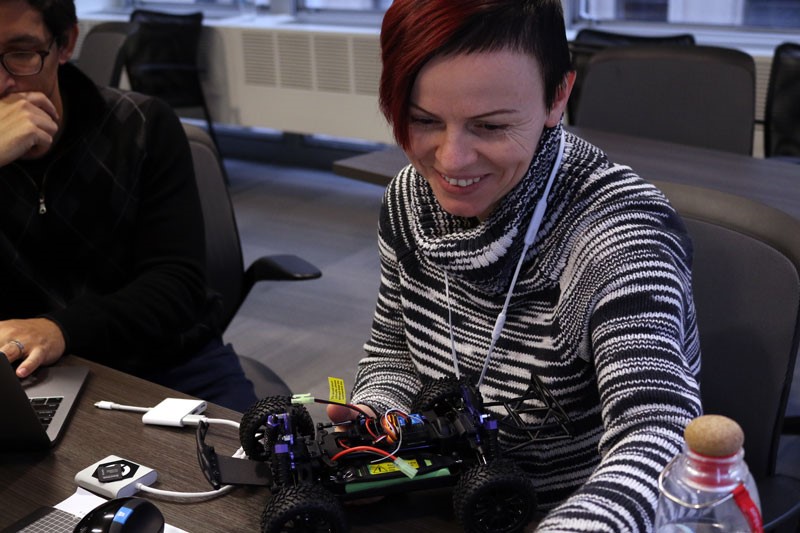AWS Public Sector Blog
ServerCentral Turing Group launches AWS race car competition to fuel machine learning
ServerCentral Turing Group (SCTG), an Amazon Web Services (AWS) Advanced Consulting Partner, recently held a self-driving car challenge open to all employees. After the 2018 acquisition of Turing Group by ServerCentral, the AWS Public Sector Partner aimed to use the competition to unite the two legacy companies, while also building expertise across AWS services.
Over 30 employees were split into two cross-functional teams that met weekly to build and train self-driving cars in preparation for the final race competition, where the winner is determined based on course accuracy and speed. Through their preparation, the teams grew a deeper understanding of AWS, cloud technology, machine learning (Amazon SageMaker), embedded software, and electronics. Each team created AWS accounts to store training model datasets in Amazon Simple Storage Service (Amazon S3) object storage.
https://vimeo.com/sctg/robocar-month-1
AWS DeepRacer wasn’t available when the competition began, so teams were given a standard DonkeyCar kit containing a 1/10th-scale remote-control (RC) car, Raspberry Pi 3, Servo, MicroSD card and card reader, battery packs, camera, and 3D-printed DonkeyCar chassis.
Race courses were taped off throughout the SCTG office in downtown Chicago where teams held manual test-drive sessions to train, calibrate, and deploy machine learning models for each car. The car records steering and throttle information and captures JPEG images at speed while a person drives the car. The teams then used Amazon SageMaker to generate a model using the driver input and corresponding imagery to identify what changed in the image matched to the inputs at that point in the course. The cars learned to navigate the course by looking for patterns and similarities in the action taken and the image seen.
Both teams met independently to validate test data to validate cars could successfully generate accurate predictions on steering each course. Using laptops and a small test dataset, teams identified common steps to train the cars. The aim was to test concepts and gauge results quickly — regardless of whether they succeeded or failed.
Deploying Amazon SageMaker
The teams pivoted to Amazon SageMaker and Amazon S3 object store to generate reliable results quickly.
The S3 toolset was installed on the Raspberry Pi, simplifying the transfer of training data to an Amazon S3 bucket. Once Amazon SageMaker was in place, teams processed large datasets in minutes. The teams had enough flexibility to experiment and adjust machine-learning models rapidly, including making changes, collecting data, processing, and seeing results without unnecessary delays waiting for progress indicators.
“Amazon SageMaker gave us the freedom to compile, calibrate, perform, and repeat,” said Chris Grahn, Director of Data Center Services, SCTG.
Drawing closer to the final race, teams were able to dial in calibrations for each car, crunch data to navigate curves, and steer the robocars at increased speed.
“The self-driving car challenge proved to be an exciting, engaging, and experiential method to drive awareness of Amazon SageMaker and machine learning through a hands-on approach,” said Jeff Pazen, Director of Customer Success, SCTG.
Learn more about Amazon DeepRacer and the AWS DeepRacer League.




